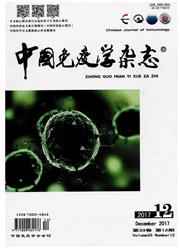

 中文摘要:
中文摘要:
目的 利用多晶硅纳米孔技术人工合成一种多孔隙薄膜,并在薄膜上培养狗肾脏细胞(MDCK),观察细胞生长情况及膜的生物相容性.方法 采用微电子机械系统(MEMS)工艺,对硅片进行旋涂光刻胶、湿法刻蚀、电镀等以形成一种孔隙规整的多孔薄膜,并采用多种细胞外基质对其进行包被修饰,然后进行MDCK细胞培养,观察细胞生长形态及功能等.结果 人工合成了一种孔隙大小可控,孔隙结构规整的多孔隙薄膜.多种细胞外基质包被并不影响膜孔径结构,其中Ⅳ型胶原包被后细胞最容易黏附、生长、增殖.多孔隙薄膜不诱导细胞死亡,也不诱导细胞释放炎性因子如白细胞介素1β(IL-1β)和肿瘤坏死因子α(TNF-α)等.扫描电镜观察显示细胞生长状态良好,细胞与细胞之间结合紧密,顶端有丰富的微绒毛形成,提示其功能活跃.结论 基于MEMS工艺研制的多孔隙薄膜生物相容性较好,没有明显的细胞毒性,可以考虑作为组织工程模拟肾小球滤过膜的支架材料.
 英文摘要:
英文摘要:
Objective To observe the growing shape and function of Madin-Darby canine kidney (MDCK) cells implanted on the polysilicon nanopore membrane by micro-electro-mechanical system (MEMS). Methods The polysilicon nanomembrane was made by silicon film processed via whirling photoresist, wet etching, electroplating and so on, and then it was coated by extracellular matrix and implanted with MDCK cells. The cell growth shape and function was observed or examined by scanning electron microscope or MTT test and Trypan Blue staining.Results The nanomembrane with regular slit pores was successfully fabricated. Extracellular matrix-coated nanomembrane, especially for collagen Ⅳ coating, was more suitable for MDCK cells to adhere and proliferate without membrane injury. The polysilicon nanomembrane coated with extracellular matrix did not induce the cell death and also not stimulate cells releasing the cytokines such as interleukin-1β (IL-1β) and tumor necrosis factor α (TNF-α). Under scanning electron microscope, MDCK cells formed a flat single-cell fusion with tight junction on the surface of polysilicon nanomembrane and there was a large number of microvillus on the top of cells.Conclusion The collagen-coated polysilicon nanomembrane made by MEMS techniques, with no cytotoxicity and good biocompatibility, is valuable to frame the artificial glomerular filtration membrane
 同期刊论文项目
同期刊论文项目
 同项目期刊论文
同项目期刊论文
 Comparing the Autoantibody Levels and Clinical Efficacy of Double Filtration Plasmapheresis, Immunoa
Comparing the Autoantibody Levels and Clinical Efficacy of Double Filtration Plasmapheresis, Immunoa 期刊信息
期刊信息
